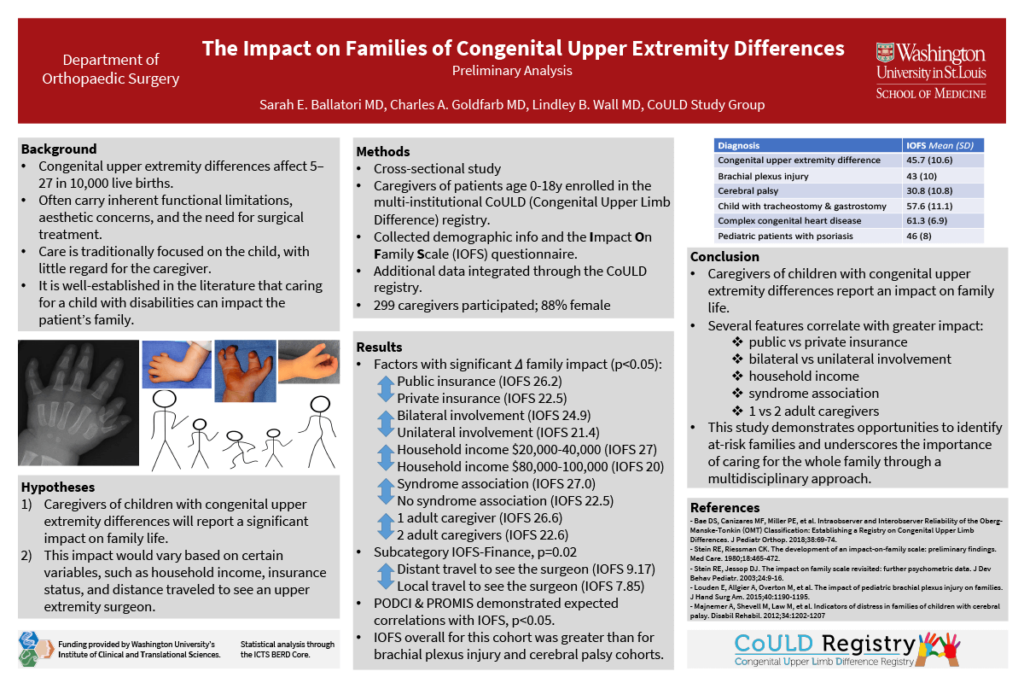Introduction: Congenital upper extremity differences often carry inherent functional limitations, aesthetic concerns, and the need for surgical treatment. We hypothesize that 1) caregivers of children with these differences will report a significant impact on family life, and 2) this impact would vary based on certain variables, such as insurance status.
Methods: Caregivers of patients age 0-18 years enrolled in the multi-institutional CoULD (Congenital Upper Limb Difference) registry were contacted. Survey questions included demographics, variables of interest, and the Impact on Family Scale (IOFS) questionnaire. Data were analyzed using Tukey post-hoc tests and linear regressions. Historical survey instrument results available through the CoULD registry, including PODCI and PROMIS, were also analyzed.
Results: 285 caregivers participated. 42% female patients; 88% female caregivers. Factors with significantly increased family impact included: household income $20,000-40,000 vs $80,000-100,000; public vs private insurance; bilateral vs unilateral involvement; syndrome association; and 1 adult caregiver vs 2. Additionally, all categories of PODCI (upper extremity, mobility, sports, pain, happiness, global) demonstrated a negative correlation with IOFS. PROMIS upper extremity and peer relations demonstrated an inverse relationship with IOFS; PROMIS pain interference had a positive correlation with IOFS. Although not significant for the IOFS-Overall, there was significantly increased sub-category of IOFS-Finance for distant vs local travel to see the surgeon. The IOFS-Overall for this cohort was significantly lower than the IOFS for other childhood illnesses cited in the literature.
Impact: Caregivers of children with congenital upper extremity differences report an impact on family life. However, this impact is less than that of other childhood illnesses. Several factors correlate with family impact, which represent opportunities to identify at-risk families and underscore the importance of caring for the whole family through a multidisciplinary approach.
Organization – Washington University in St. Louis
Ballatori SE, Wall LB
